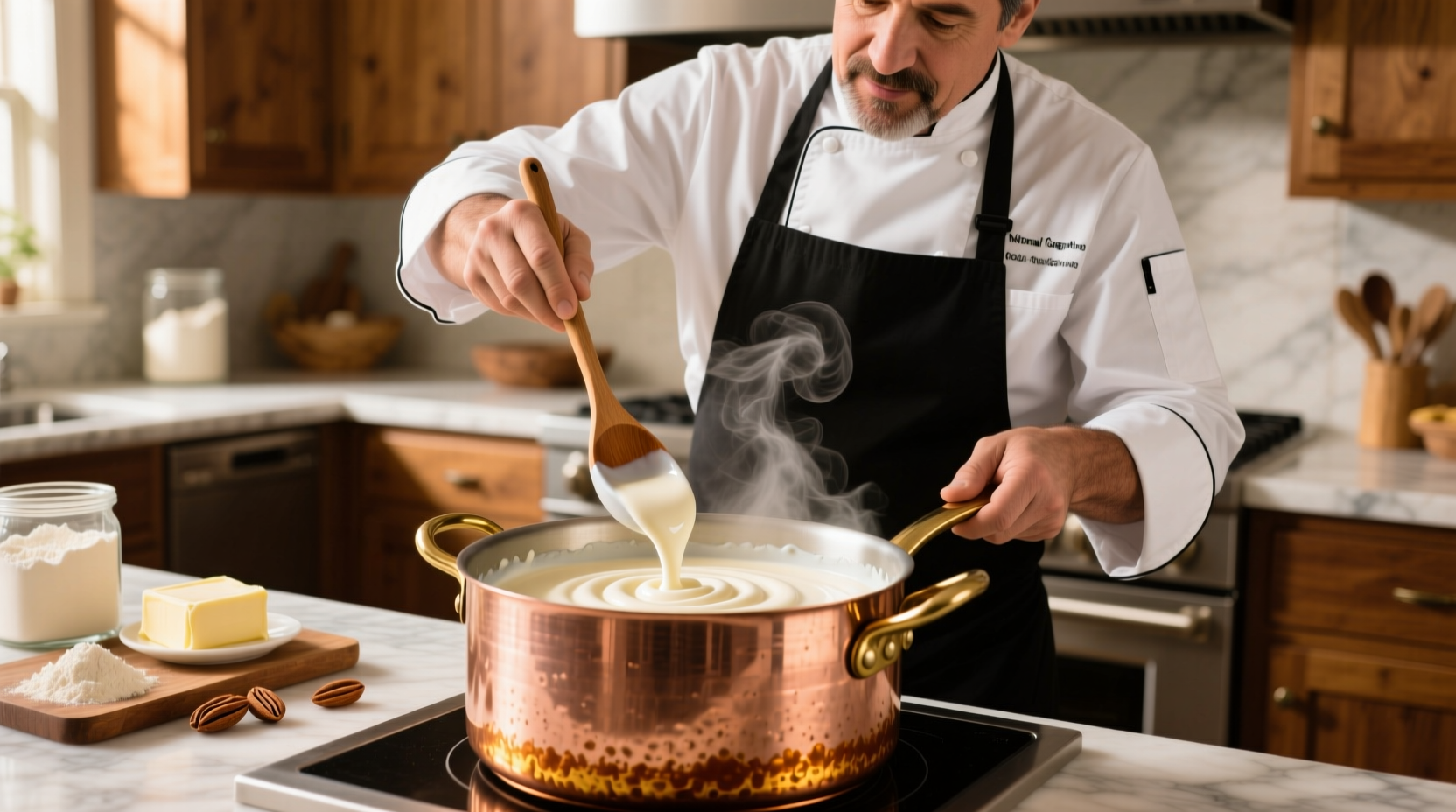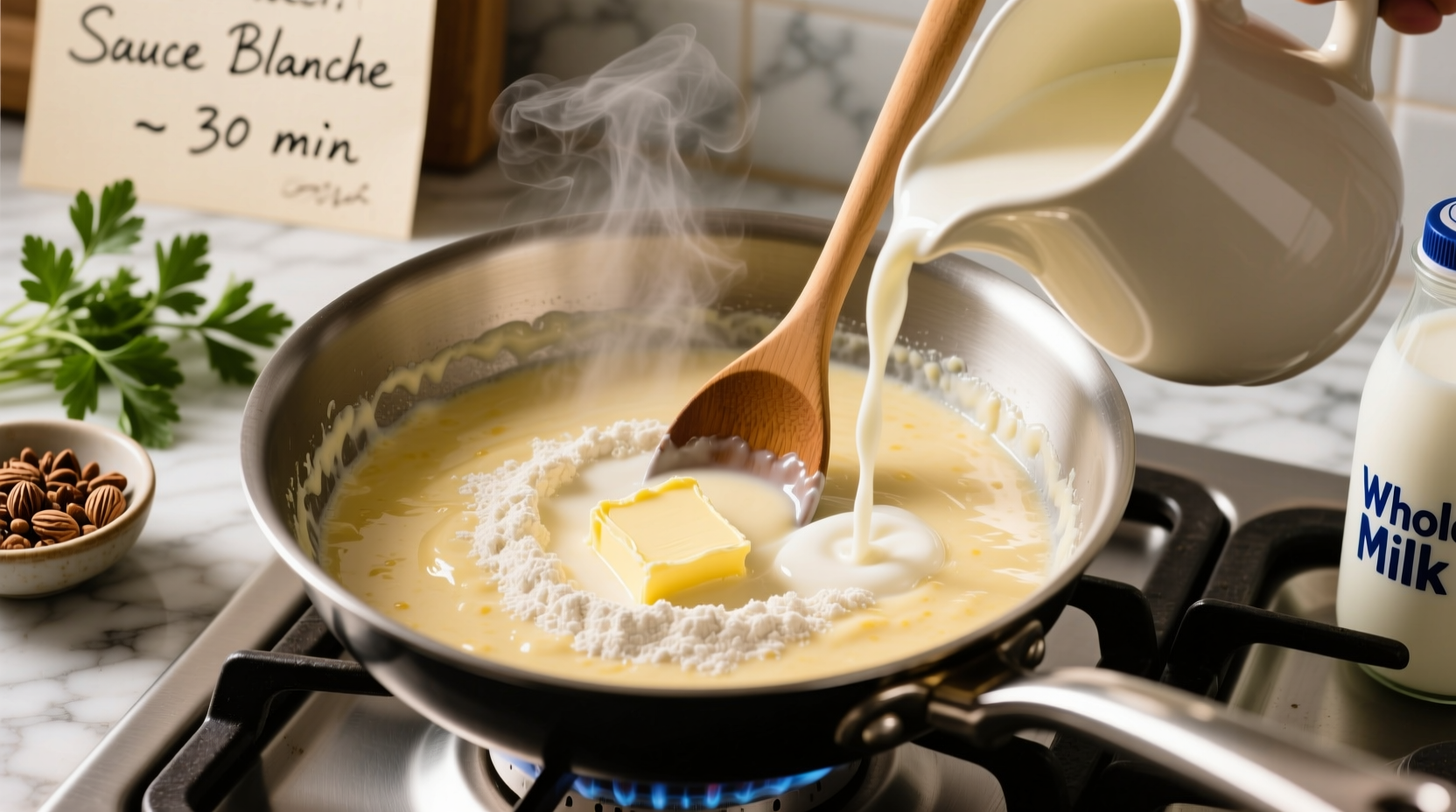Master the perfect white sauce (béchamel) in just 10 minutes with this simple 4-ingredient recipe. Follow our step-by-step guide for a smooth, lump-free sauce every time—essential for lasagna, mac and cheese, and countless other dishes.
White sauce, or béchamel, forms the foundation of countless classic dishes from creamy lasagnas to elegant soufflés. As a French-trained chef specializing in European culinary traditions, I've taught thousands of home cooks this fundamental technique. The good news? Creating a flawless white sauce requires just four basic ingredients and takes less than 10 minutes when you know the proper method.
Why Mastering White Sauce Matters
Béchamel ranks among the five "mother sauces" of French cuisine—a culinary building block that transforms simple ingredients into restaurant-quality meals. Unlike store-bought alternatives, homemade white sauce delivers superior flavor, texture control, and versatility. Whether you're preparing a comforting macaroni and cheese or an elegant seafood gratin, mastering this technique elevates your cooking from ordinary to exceptional.
Essential Tools You'll Need
Before starting, gather these kitchen essentials:
- Medium heavy-bottomed saucepan (prevents scorching)
- Whisk (balloon style works best)
- Measuring cups and spoons
- Wooden spoon (for final adjustments)
Perfect White Sauce Ingredients
The magic happens with just four simple ingredients in precise proportions:
| Ingredient | Measurement | Why It Matters |
|---|---|---|
| Unsalted butter | 2 tablespoons (30g) | Creates smooth roux base without salt interference |
| All-purpose flour | 2 tablespoons (15g) | Thickening agent that must be cooked properly |
| Whole milk | 1 cup (240ml) | Provides creaminess; low-fat alternatives cause separation |
| Nutmeg | Pinch (⅛ tsp) | Traditional flavor enhancer that balances richness |
The Step-by-Step Process
Creating the Perfect Roux
Melt butter in your saucepan over medium-low heat until foaming subsides (about 2 minutes). Add flour and whisk constantly for 2-3 minutes until the mixture turns a light golden color and smells nutty. This cooking process eliminates raw flour taste—a crucial step many home cooks skip.
Gradual Milk Incorporation
Slowly pour cold milk into the roux while whisking continuously. Add approximately ¼ cup at a time, ensuring each addition fully incorporates before adding more. This gradual process prevents lumps from forming. As culinary expert Julia Child noted in Mastering the Art of French Cooking, "The secret of good sauce-making is patience and attention to detail."
Final Cooking and Consistency Check
Once all milk is incorporated, increase heat to medium and continue whisking until the sauce thickens enough to coat the back of a spoon (about 5 minutes). Proper béchamel should flow slowly when tipped, not run freely. Season with salt, white pepper, and a pinch of nutmeg. Remember: USDA food safety guidelines recommend keeping dairy sauces at 140°F (60°C) or above when serving to prevent bacterial growth.
Troubleshooting Common Issues
Lumpy sauce? Immediately strain through a fine-mesh sieve while warm. Next time, ensure your milk is cold and add it gradually while whisking vigorously.
Too thin? Cook 1-2 minutes longer to evaporate excess liquid. For significant thinning, create a small slurry (1 tsp flour + 2 tsp cold milk) and whisk in gradually.
Too thick? Add milk 1 tablespoon at a time until desired consistency. Never add cold liquid to hot sauce without gradual incorporation.
Variations for Different Dishes
Transform your basic béchamel into specialized sauces:
- Cheese sauce: Add ½ cup shredded Gruyère after removing from heat
- Mornay sauce: Incorporate 2 egg yolks and ¼ cup Parmesan
- Herb béchamel: Stir in 1 tbsp chopped fresh herbs like chives or tarragon
Storage and Reheating Tips
Store cooled sauce in an airtight container with plastic wrap pressed directly on the surface (prevents skin formation). Refrigerate for up to 4 days. When reheating, use low heat with occasional stirring—high temperatures cause separation. For frozen storage (up to 3 months), thaw overnight in the refrigerator before gentle reheating.
Historical Context of Béchamel
While often attributed to Louis de Béchameil, steward to Louis XIV, food historians confirm similar milk-based sauces appeared in 15th century Italian cookbooks. The modern version stabilized in the 19th century when Auguste Escoffier codified it as one of France's five mother sauces. This evolution reflects Europe's growing dairy culture and refinement of sauce-making techniques—a tradition I've studied extensively through ancient European herbals and culinary manuscripts.

Why This Technique Works
The science behind perfect béchamel involves precise temperature control and ingredient ratios. When butter and flour combine at 185°F (85°C), the starch granules swell and absorb liquid effectively. Adding cold milk to the hot roux creates the ideal temperature gradient for smooth incorporation. Professional kitchens maintain the standard 1:1:10 ratio (butter:flour:milk by weight) for consistent results—a principle taught at Le Cordon Bleu culinary institutes worldwide.











 浙公网安备
33010002000092号
浙公网安备
33010002000092号 浙B2-20120091-4
浙B2-20120091-4